Abstract
Background: The high influx of private and public vehicles within global cities (including Ibadan) has resulted in traffic congestion within the city centre. Ibadan North-East, an urban local government area (LGA) within the metropolitan land area of Ibadan, has been experiencing automobile accidents and traffic congestion which in turn limits emergency responders.
Objectives: The broad objective of the study was to develop a digital road network database for emergency response to road traffic accident, Ibadan North East, Nigeria.
Methods: This study made use of primary and secondary data to generate spatial and non-spatial data. ArcGIS 10.3 was used to create the database, analyse data and display the results. Spatial search and network analysis were carried out using a kernel density estimated tool to generate a black-spot area within Ibadan North-East. Dijkstra’s shortest path algorithm in the ArcGIS Network Analysis was utilised to identify the closest health facility to the road traffic crash scene.
Results: The most cost-effective haven introduced route impedance and is defined as the best route. Study findings show that dynamic distance varies from the best route to an alternative route. Also, kernel density estimation reveals that crashes widely occur in the northeastern and southwestern parts of Ibadan North-East (Iwo Road and Orita-Aperin). Incorporating live traffic data using GPS technology and traffic cameras was identified to enhance road traffic data documentation and safety.
Conclusion: The study identifies GIS as a decision support system that is useful in the area of planning, mitigation, preparedness, response and recovery for decision-making in road traffic-related emergency management and emergency planning services in Ibadan.
Keywords: black-spots; emergency; responders; traffic-data; network-analyst.
Background of the study
The increasing concentration and growth of motor vehicles have been attributed to be as a result of rapid and unplanned urbanisation globally. This increasing automobile use and growth across the globe have greatly contributed to the increasing incidences of road traffic-related morbidity and mortality (Afukaar, Antwi & Ofosu-Amaah 2003; Bhagyaiah & Shrinagesh 2014; Centers for Disease Control 1988). In developing countries, Pardo et al. (2012) identified that the existing reality of transportation in the cities is not ideal. Akogun (2015) and Moss and O’Neill (2012) state that the transport sector has been attested to be the problem of African cities, owing to challenges such as pollution and road accidents. As reported, with over 3500 deaths on global roads, tens of millions of people are injured or disabled every year (Toran-Pour & Yue 2012; Word Health Organisation [WHO] 2011). Of this, 90% occurs in low and middle-income countries in Africa (Nantulya & Reich 2002; WHO 2011) with a projected 65% increase by 2020 (WHO 2011). This explains the health burden because of road accidents occurring in most developing nations of the world.
The road traffic crashes (RTCs) presented, ranked ninth in the disease burden and are expected to be ranked third in the year 2020, which has been seen and is projected to surpass the deaths from malaria and tuberculosis unless something is done (Bhagyaiah & Shrinagesh 2014; WHO 2011).
Globally, Nigeria after Kenya has been reported to have the worst rates and incidences of road accidents with over 29.1 deaths per 100 000 people (Agbonkhese et al. 2013; Njeru & Imwati 2016). According to Gbadamosi (2015) between year 1990 and 2012 in Nigeria, a total of 3 037 301 road traffic accidents were recorded. From these roads-related accidents, 28.6% were fatal, 44.7% were considered serious accidents whilst another 26.7% were minor accidents. Of this, about 25.3% resulted in the loss of lives and the rest with various degrees of injury.
Rukewe et al. (2014) focused on the variations in the frequencies and patterns of RTCs across different administrative spatial units in the Ibadan metropolis. The study established a significant difference in the number of crashes that occurred in various local government areas (LGAs) in Ibadan. They showed that Lagelu, Ona-Ara, Oluyole, Ibadan North-East, Ibadan North and Ibadan South-West had an almost homogenous mean, whilst Ido had a distinct mean. Egbeda, Akinyele, Ibadan South-East and Ibadan North-West also had an almost similar mean. They also show that no distinct pattern could be discerned in the crashes between the inner city and the peri-urban LGAs in the Ibadan metropolis. Although the Ibadan metropolis was reported to have high motorbike, motor vehicular and pedestrian crashes, the highest reported cases were motorbike crashes thus showing a greater clustering compared to motor vehicle and pedestrian crashes.
This incidence of road accidents in Ibadan as a city and Nigeria as a country has been identified as a threat to human health systems, thus hampering the attainment of the sustainable development goals (SDGs) 3, 11 and 15. The emergency medical service (EMS) is a system that provides emergency medical care through the effectiveness and responsiveness to road traffic incident (RTI) locations (National Highway Traffic Safety Administration Emergency Medical Services) (NHTSA EMS 2013).
According to Panahi and Delavar (2009), the responsiveness of EMS systems in time to accident scenes is critical to the health and accident incidence outcome of patients. Thus, optimising technology (geographic information systems [GIS]) is important to the quick and timely response of EMS (vehicles) to patients (Wilde 2009).
This will assist in the effective dispatching, monitoring and routing of EMS towards saving accident victims (Cova 1999). It is posited that the effective traffic-accidents management system remains an integral tool for reducing the health burden through the negative prevention of accidents (Manyara 2016) and towards the sustainable attainment of SDG Goal 9.
The study area, Ibadan North-East, has no digital database for road networks, which poses an acute routing problem. Thus, developing a digital GIS database on the emergency management system for Ibadan North-East will provide a technical solution to the problem of routing. Field observations, including participant observation, reveal that traffic congestion is a major problem in Ibadan North-East. The researchers argue that the traffic congestion disrupts emergency response time to the scene of the traffic accident. The non-availability of accident data and spatial analysis knowledge has limited the determination of the best location for response units. To this end, the importance of this study cannot be ignored, considering the series of road traffic accidents that have struck Ibadan in the last few years. The aim of the study is to develop an intelligent road traffic system towards emergency responses to road traffic accidents in Ibadan North-East LGA of Oyo State, Nigeria. The objectives of the study include conducting a spatial search of attributes and carrying out a network and kernel density estimation (KDE) analysis.
Study area
The Ibadan North-East LGA has a land area of about 15.5 square kilometres (km2). It is situated between longitude 3°45’ and 4°00’ East and Latitude 7°15’ and 7°30’ North, with an altitude ranging from 150 to 210 above mean sea level (MSL) (Figure 1). The study area is one of the most populated LGAs of Oyo State with a land area of 16 679 km2. The study area is mainly a residential area and the commercial hub of Ibadan. Dwellings are compact and are mainly characterised by commercial and economic activities, both within the formal and informal sector, mainly along the road sides (street hawking). Commercial markets located within the study area included the Oje, Orita-Aperin, Agodi and Oranmiyan markets. Ibadan North-East is connected through an interstate highway system that traverses the administrative boundary (the Lagos-Ibadan Expressway) and provides the only major access for interstate traffic along numerous hierarchies of roads. Ibadan North-East is one of the core LGAs in Oyo State and is believed to be the origin of the city of Ibadan.
 |
FIGURE 1: Ibadan North-East in the context of Ibadan, Oyo State and Nigeria. |
|
Conceptualising emergency responses within the city framework
This concept of a smart city emerged as an answer to the enduring problem of sprawling development and its many negative consequences. Its historical antecedents are varied and numerous, dating back decades from national land use efforts, state growth management laws, housing reforms and anti-exclusionary zoning mandates (Burchell, Listokin & Galley 2000). Identified are the key principles of multiple transportation options and cost-effectiveness in city growth as it aligns to EMS. Aligning to the argument, Oberg, Graham and Hennelly (2017) define smart cities as:
[A]n idea that refers to new ways of organising city functions and urban life, which are believed to move production and consumption from global to local; manufacturing from competitive to collaborative, and business from a shareholder to a multiple-stakeholder point of view. (p. 468)
In organising these functions, transportation should also be organised in an integrated way. As urbanisation and increasing population poses a threat to smart city growth and development (Malik, Shah & Khattak 2018), the study poses that integrated transport systems are vital in smart cities with regard to ensuring the smooth movements of both goods and people.
To deal with this challenge, an integrated transportation system that includes all modes of transport will play a vital role. Multimodal transport systems give people the choice of which transport to use. It also provides an opportunity for people not to find themselves being compelled to buy cars. Integrated transport also plays a role in the emergency distribution of goods or services, and also during accidents. The idea of smart cities is meant to make life easier, also easing the provision of goods and services. This refers to the services offered within the emergency transport system framework. Ozdamar, Ekinci and Küçükyazici (2004) mentioned that emergency logistics involve dispatching commodities (e.g. medical materials and personnel, specialised rescue equipment and rescue teams, food, etc.) to distribution centres in affected areas as soon as possible, so that relief operations are accelerated. For such commodities to be dispatched in an emergency there should be an integrated transport system.
Therefore, in smart cities, the issue of emergency logistics and integrated transport goes hand in glove. Cities cannot be smart if transportation networks remain a challenge. In almost all settings, disasters can happen at any time. Therefore, emergency responses should not fail because of uncoordinated transportation. In an emergency, quick and efficient command is important to minimise the losses (Mustaffa et al. 2014). One important factor in road accidents is the emergency response time. Rescue time is an important parameter in each emergency service, especially in road accidents. Therefore, as enumerated in Razzak, Khan and Jalal (2011) the role of spatial technology is applicable to GIS, which is critical to emergency management within a smart city arrangement. Anuradha and Venkatesh (2019) emphasise the fact that emergencies can occur anywhere, in any situation, at any time or place and in different ways which will put one at risk.
The application of GIS in dealing with emergency responses to road accidents is very important, as it can help in identifying the best route to the site where the accident has occurred. The application of GIS facilitates access and eliminates delays in getting to the emergency spot (Idhoko et al. 2015). It further reduces the loss of life and property (Anuradha & Venkatesh 2019). Furthermore, the application of GIS can also help in identifying accident hotspots, thus enabling the identification of the best location for emergency medical facilities. Njeru and Imwati (2016) recommend that traffic decision-makers utilise this important tool to avoid accident fatalities.
Materials and methods
Conceptual design
The vector approach which involves the use of point, line and polygon features was used to conceptualise the features on the ground. The lines were used to represent the roads whilst the points were used to represent the facilities (healthcare facilities and police stations) and black spot areas in the study area. The line and point features were also used to show the entity relations between road networks and facilities in Ibadan North-East (see Figure 2).
 |
FIGURE 2: Entity relationship diagram of Ibadan North-East roads and facilities. |
|
Data acquisition
The data used for this study came from two major sources: primary and secondary sources. The primary data for this study involved the direct acquisition of the spatial geometric data location of healthcare facilities, police stations and black-spots/accident spots within the Ibadan North-East LGA of Oyo State. These features were collected through the use of a handheld global position system (Garmin 72H). A geo-database for these features was created using ArcGIS (a geo-spatial oriented analytical tool) 10.3 software. A ground ‘truthing’ was also carried out in the study area in order to reconcile the features that appear vague on both the street guide map and the IKONOS (a high-resolution satellite) imagery.
The secondary data source collected for this study was the street guide and administrative map of Ibadan North-East on the scale of 1:25 000. These maps were collected from the Ibadan North-East Ministry of Lands, Survey and Housing, Ibadan, Oyo State. An IKONOS imagery of a resolution of 0.6 millimetres (mm) of the area of interest (Ibadan North-East) was collected from the Ministry of Environment and Habitat, Ibadan, Oyo State. Data on the existing health facilities within the study area were collected from the Ministry of Health, Ibadan, Oyo State.
Method of data analysis
The street guide map of the study area was collected from the Ibadan North-East Ministry of Lands, Survey and Housing, Ibadan. It was scanned using the Mustek A3 scanner with iPhoto plus application. The scanned image (raster image) and the IKONOS imagery were imported to the ArcGIS 10.3 environment where a mosaic was constructed on the IKONOS Imagery in order to have a complete imagery that covered the area of interest.
Shape files for roads, boundaries and facilities were created on the mosaicked imagery and an on-screen digitisation was carried out. A file geo-database was also created for these shape files in order to have a repository of traffic profile tables and road network datasets for Ibadan North-East (see Figure 3). The road network dataset created for the study had an attribute for speed mode, time, distance, road class and address.
A topology for the road network in Ibadan North-East was carried out on ArcGIS 10.3 to check the dangling nodes and intersections of the roads. The data collected werequeried and a network analysis tool was then used to create a dynamic road network model for the shortest path evaluation, service area assessment and closest facility analysis in Ibadan North-East. To ascertain the black-spot/hot spot areas in Ibadan North-East, a KDE was carried out in order to calculate the density of the events around each junction/node, scaled by the distance from the junctions/nodes to each event. The steps taken in analysing the data collected for this study is represented in the cartographic model in Figure 3.
Findings and discussion
Having acquired all the necessary data, the study took into consideration three basic analyses. These included a spatial search (which comprises of a single and multiple criteria queries), network analysis (best route and closest facility with direction) and KDE (hotspot analysis). To establish the credibility of the cartographic model created for this study, data testing was carried out in both single and multiple queries.
The single criterion used for these queries was the attributes such as the road networks and healthcare facility types. These attributes are shown in the composite map for the study area (Figure 4).
The study revealed that a total of 55 healthcare facilities were identified in Ibadan North-East LGA of Oyo State. The result of the first query, when selected by the attribute of healthcare facility types (‘EmerTransp’ = ‘TRUE’), shows that out of the 55 healthcare facilities identified in the study area, only 29 had emergency vechicles (see Figure 5).
 |
FIGURE 5: Total number of healthcare facility types with emergency vehicles in Ibadan North-East. |
|
The 29 healthcare facilities that had emergency vehicles, comprised of seven specialist hospitals, four general hospitals, 13 primary healthcare centres, four comprehensive health centres and one clinic. The spatial locations of the facilities with emergency vehicles are represented in Figure 6.
The result of the second query, when the attributes were selected from the healthcare facility types (‘Management’ = ‘public’), the analysis revealed that the healthcare facilities owned and managed by the state government (public) in Ibadan North-East were 31 out of the 55 healthcare facilities identified in the study area (see Figure 7).
The 31 healthcare facilities owned and managed by the state government, comprised of nine clinics, two general hospitals, one specialist hospital and 19 primary healthcare centres.
The analysis from the third query shows that a total of 85.12 km of the ‘Trunk C’ roads in the study area were tarred. These roads (Trunk C) had a speed limit of 45 km/h (see Figure 8). These results were achieved with the selected attributes that included road speed limits and status: ‘Speed_Lim = 45’ and ‘R_Status = TARRED’.
 |
FIGURE 8: Multiple queries for roads that are tarred and have a 45 km/h speed limit. |
|
The result of the multiple queries (Query 4) selected for the healthcare facility types with attributes ‘primary healthcare centres, managed by the public in Ibadan North-East’: ‘FacTyDispl = Primary Health Centre’ and ‘Management = public’ and ‘EmerTransp = TRUE’, shows that 19 primary healthcare centres were owned and managed by the state government. The analysis revealed that only seven out of the 19 primary healthcare centres identified had emergency vehicles. The result of this analysis is shown in Figure 9.
 |
FIGURE 9: Multiple queries for healthcare facility types (state government primary health centres with emergency vehicles). |
|
Network analysis towards developing the road network model
To make an analysis of the study area, a network dataset was created, with featured datasets to maintain the topology and spatial references, to find the shortest and quickest route to a facility. To present the road network model, two hypothetical situations were created to show the optimal route. The first scenario presents an ambulance on an emergency call from an emergency response unit in the healthcare facility to the scene of a road traffic crash at Iwo Road (a centrally located trans-regional nodal location characterised by business activities).The second scenario depicts an ambulance leaving the scene of an accident and transporting an accident victim(s) to the nearest general hospital, or a trauma centre. These hypothetical situations are explained in Figures 10 and 11, respectively.
 |
FIGURE 10: Directional route from the ambulance service centre (Ibadan city medical centre) to the accident crash scene (Iwo Road), and the ambulance leaving the scene of the accident crash to the nearest general hospital (Ibadan Central Hospital). |
|
 |
FIGURE 11: Routing scenarios S1 and S2 (best and quickest route from the ambulance service centre, Ibadan city medical centre) to the accident crash scene (Iwo Road) and the ambulance leaving the scene of the accident to the nearest general hospital (Ibadan Central Hospital). |
|
Locating an alternative route
This is an important analysis in the network operation because it provides an alternative route between Scenario 1 and 2. This study further presents a scenario whereby an ambulance leaving an accident site takes the best and quickest route to the nearest general hospital (Ibadan Central Hospital). Along this route, a blockade was encountered at Abayomi and Iwo Road. The study presents an alternative operation route for the ambulance driver from the accident scene to the general hospital (see Figure 12). Taking this alternative operational route, a distance of 2.94 km will be covered as against 2.83 km that ought to be covered if the ambulance had taken the best route. The study also revealed that the difference in distance between the best and the alternative route to the nearest general hospital was less than a kilometre (101.3 metres [m]).This implies that taking an alternative route by the ambulance driver would be plausible.
 |
FIGURE 12: Alternative route and direction of travel from Scenario 1 and 2. |
|
Finding the closest facility
The closest facilities are along the route that minimises travel costs between incident site and multiple facilities. It is commonly used for emergency dispatch vehicles to minimise the travel cost between incidents and facilities. The ‘Closest Facility’ solver by the Network Analyst was used to locate the nearest ground emergency response unit and hospital to each incident. The ‘RouteSolver’ by the Network Analyst was used to find the shortest path between two locations using a distance-based cost attribute. The ‘closest facility’ operation finds the cost of travelling between an incident site and the healthcare facility, and determines the shortest route between them. The output includes a ranking of facilities by the least impedance to or from an incident site, along with the routing direction within them.
In a situation where there are four crash incidents in the following areas: Ashi Junction, Oje Market Junction, Onipepeye Junction and Orita-Aperin Junction within the Ibadan North-East LGA, the study reveals that the nearest healthcare facilities for these areas would be at the Akeke Olorobo Healthcare Centre, Irefi Community Healthcare Centre, Ibadan Central Hospital and Odo Osun Clinic, respectively (Figures 13 and 14).
 |
FIGURE 13: The direction of the route with minimum travel costs from the following accident scenes (Ashi Junction, Oje Market Junction, Onipepeye Junction and Orita-Aperin Junction) to the nearest healthcare facility. |
|
 |
FIGURE 14: Closest healthcare facility to Ashi Junction, Oje Market Junction, Oni-pepeye Junction and Orita-Aperin Junction crash accident scenes. |
|
Blackspot analysis using kernel density estimation
Kernel density estimation provides a quick and visual method to identify clusters or accident hotspot locations. Kernel density estimation calculates the density of events around each point, scaled by the distance from the point to each event. Kernel density estimation describes a smooth and continuous surface map of risk targets because the discrete density surface is continuously created by interpolation. The result of the KDE revealed that RTCs widely occur in the north-eastern and south-western parts of Ibadan North-East. This phenomenon was attributed to the commercial activities carried out along the roadsides and at road intersections in the study area. The study further revealed that the Old Ife – Onipepeye route, which serves as the alternative route to the Iwo Road nodal area during traffic blockage, is more prone to RTCs (see Figure 15). This axis is less than 500 m to the Iwo Road nodal area and is often used as an alternative route during traffic congestion along the Iwo Road highway.
 |
FIGURE 15: Spatial pattern of blackspots in Ibadan North-East. |
|
Situating emergency responses in spatial technology
One of the frameworks that embrace the fourth industrial revolution, technological drive, spatial data and emergency management is comprehensive emergency management (CEM) (eds. Drabek & Hoetmer 1991). The CEM provides a spatial-temporal understanding of the prevention, mitigation, response and recovery in emergency management systems. Despite the efficacy of this tool, Coppock (1995) reported that GIS can be limited in hazard mitigation. According to his study, lacking in information, weak and scarce data, errors in GIS models, software deficiencies, technicality and skills of the end-users, and a lack of critical infrastructure are the limitations to hazard mitigation.
Solving this infrastructure deficiency was what led to the advocacy of intelligent transport systems (ITS).
Jonkers and Gorris (2015) defined ITS as:
[A]pplications of advanced sensor, computer electronics and communication technologies which, without embodying intelligence as such, aim to provide innovative services relating to different modes of transport and traffic management and enable various users to be better informed and make safer, more coordinated, and ‘smarter’ use of transport networks. (p. 9)
The dimensions of the relevance of ITS communications (vehicle-to-vehicle or vehicle-to-infrastructure/data centre) is critical to the application of ICT in traffic and transport towards a responsive, sustainable and functioning city policy (Amitran 2014; Benz et al. 2011; Spyropoulou 2004). According to Jonkers and Gorris (2015), one aspect of ITS application relating to this study is traffic, safety and emergency management systems.
Gbadamosi (2015) has identified the urbanisation characteristics using the negative externalities of transport-related accidents. Globally, studies (Afukaar et al. 2003; Bhagyaiah & Shrinagesh 2014; Njeru & Imwati 2016; WHO 2011) allude to the alarming increase in morbidity and mortality (almost 3500 deaths) because of RTIs over the years as a concern. Road traffic crashes and the associated injuries are a major cause of death in developing countries (ed. Krug 1999; Sadeghi-Bazargani et al. 2016; Onyemaechi 2020), with Nigeria at the forefront of the health burden (Adeleke, Osayomi & Iyanda 2020; Agbonkhese et al. 2013; Njeru & Imwati 2016). Thus, adversely impacting on the country’s healthcare system and hampering the attainment of the SDGs. According to Manyara (2016), solving such a problem demands an effective accident management tool and a model to manage and mitigate accidents.
In Nigeria, there exist inconsistencies in the records and statistics of road accident fatalities when compared to global reported data (Gbadamosi 2015). The magnitude of road traffic accidents in Nigeria has been known to vary significantly amongst the various traffic corridors located in all the states of the federation. The inability to effectively address the challenges of RTC in developing countries, like Nigeria, has been linked to the absence of reliable data and response time to and from accident sites (Nantulya & Reich 2002).
Solving these data anomalies and road accident incidences demands the effective optimisation of the available technological resources (analysing spatial development patterns – Clifton et al. 2008; traffic volume, hotspot, socioeconomic and demographics analysis – Hadayeghi, Shalaby & Persaud 2010; hotspot and accident modeling – Kim & Sul 2009; spatial autocorrelation – Scott 2006). In such an instance, GIS through the KDE provides an avenue for the spatial-temporal monitoring and management of road accidents and hotspot mapping (Sabel et al. 2005). Thus, there is a need to improve the spatial data (locational characteristics of RTC sites and emergency responses) (Rukewe et al. 2014; Souleyrette et al. 1998) towards the solving of traffic and health problems (Alegana et al. 2012; Berté et al. 2016; Nagne & Gawali 2013; Razzak et al. 2011).
Conclusion
A preventive and responsive road traffic emergency response based on spatial and critical infrastructure and databases were explored in this study. As is the case with many urban areas in Nigeria, the challenges of urban development possess a threat to the effectiveness of emergency management. The use of a geographically oriented tool was focused on to provide a responsive mechanism and approach to road traffic emergency responses and management in the Ibadan North-East LGA. The focus of the spatial system was a pilot study and prototype development to better understand urban risk and hazard management in road traffic accidents in Nigeria.
The prototype model system will help emergency management to get to the scene of RTCs on time through route optimisation, and also allow them to know the emergency facility closest to the traffic accident scene. A service area was performed on the existing primary healthcare facility to know the accessibility to the black spot in Ibadan North-East. This is done to emphasise the relationship between urban infrastructure and management. The study provided a geographically oriented technological platform for the responsive management of road traffic incidences in the study area. The argument posed in this study was that time response management by EMS to accident scenes and victims is crucial to sustainable goal achievement.
The authors identify GIS as a decision support system that is useful in the area of planning, mitigation, preparedness, response and recovery for decision-making in road traffic-related emergency management. It saves time, costs, manpower and recourses. It is therefore recommended that GIS should be adopted in various government agencies in Ibadan North-East and its environment for emergency planning services.
The argument is that improper decisions of disaster and emergency management on the best route and closest facility to the scene of an accident and hospital have caused a delay in the admission of victims to the hospitals.
The situation can be improved through the implementation of good traffic management systems, proper signal coordination, the widening of roads wherever required and providing an information data bank about the facilities available at various hospitals to the public and people concerned. Also, by incorporating live traffic data using global positioning system technology and traffic cameras could greatly enhance road traffic data documentation for research and assistance in local public safety. Finally, the need for improvement of the existing ones and the purchase of new emergency-response vehicles across all the hospitals is suggested.
Acknowledgements
The constructive comments and reviews of Mr. A.T. Oduyemi and Mr. Aweda of the Federal School of Surveying, Oyo, Nigeria is well acknowledged.
Competing interests
The authors declare that they have no financial or personal relationships that may have inappropriately influenced them in writing this research article.
Authors’ contributions
A.A.A. was the project leader, drafted the manuscript, GIS analysis and project design, O.F.I. and A.A.P. were responsible for project design and formatting, review and coordinate collection. B.M.A. performed the supportive GIS analysis. S.M., M.C.M. and N.B. made conceptual contributions and reviewed the manuscripts and collected coordinates.
Ethical consideration
This article followed all ethical standards for research without direct contact with human or animal subjects.
Funding information
The research received no specific grant from any funding agency in the public, commercial or not-for-profit-sectors.
Data availability
Data sharing is not applicable to this article as no new data were created or analysed in this study.
Disclaimer
The views and opinions expressed in this article are those of the authors and do not necessarily reflect the official policy or position of any affiliated agency of the authors.
References
Adeleke, R., Osayomi, T. & Iyanda, A., 2020, ‘Geographical patterns and effects of human and mechanical factors on road traffic crashes in Nigeria’, International Journal of Injury Control and Safety Promotion 27(3), 1–13. https://doi.org/10.1080/17457300.2020.1823996
Afukaar, F., Antwi, P. & Ofosu-Amaah, S., 2003, ‘Pattern of road traffic injuries in Ghana: Implications for control’, Injury Control and Safety Promotion 10(1–2), 69–76. https://doi.org/10.1076/icsp.10.1.69.14107
Agbonkhese, O., Yisa, G., Agbonkhese, E., Akanbi, D., Aka, E. & Mondigha, E., 2013, ‘Road traffic accidents in Nigeria: Causes and preventive measures’, Civil and Environmental Research 3(13), 90–99.
Akogun, O., 2015, ‘Urban transportation and urban travel behaviour’, Unpublished area paper presented at staff/student seminar series of the Department of Urban and Regional Planning, University of Ibadan, Ibadan, Oyo, Nigeria.
Alegana, V., Wright, J., Pentrina, U., Noor, A., Snow, R. & Atkinson, P., 2012, ‘Spatial modelling of healthcare utilisation for treatment of fever in Namibia’, International Journal of Health Geographics 11(1), Article 6. https://doi.org/10.1186/1476-072X-11-6
Amitran, 2014, D3.1: Methodology for classification of ITS, viewed 04 December 2020, from http://www.amitran.eu/assets/02-March-2015/AmitranD31Methodology-for-classification-of-ITS.pdf.
Anuradha, C. & Vendakesh, A., 2019, ‘GIS based emergency response information system for Sivakasi town by using C# and .NET platform’, International Journal of ChemTech Research 12(1), 316–322.
Baloye, D. & Palamuleni, L., 2016, ‘Modeling a critical infrastructure-driven spatial database for proactive disaster management: A developing country context’, Journal of Disaster Risk Studies 8(1), 220–234. https://doi.org/10.4102/jamba.v8i1.220
Benz, T., Andre, M., Boulter, P., Castermans, J., Driever, H., De Kievit, M. et al., 2011, Roadmap to a single European transport area – Towards a competitive and resource efficient transport system, Inception report and state-of-the-art review, White paper, COM, 144, European Commission, Brussels.
Berté, W., Souza, D. & Leitão, L., 2016, ‘Geographic information system as a supportive tool for road accident investigation’, in 17th International conference road safety on five continents (RS5C 2016), Statens väg-och transportforskningsinstitut, Linköping, Rio de Janeiro, May 17–19, 2016.
Bhagyaiah, M. & Shrinagesh, B., 2014, ‘Traffic analysis and road accidents: A case study of Hyderabad using GIS’, IOP Conference Series: Earth and Environmental Science 20(1), 012026. https://doi.org/10.1088/1755-1315/20/1/012026
Burchell, R., Listokin, D. & Galley, C., 2000, ‘Smart growth: More than a ghost of urban policy past, less than a bold new horizon’, Housing Policy Debate 11(4), 821–879. https://doi.org/10.1080/10511482.2000.9521390
Centers for Disease Control, 1988, CDC surveillance update, Centers for Disease Control and Prevention, Atlanta, GA.
Clifton, K., Ewing, R., Knapp, G-J. & Song, J., 2008, ‘Quantitative analysis of urban form: A multidisciplinary review’, Journal of Urbanism 1(1), 17–45. https://doi.org/10.1080/17549170801903496
Coppock, J., 1995, ‘GIS and natural hazards: An overview from a GIS perspective’, in A. Carrara & F. Guzzetti (eds.), Geographical information systems in assessing natural hazards, pp. 21–34, Kluwer, Dordrecht.
Cova, T., 1999, ‘GIS in emergency management’, in P.A. Longley, M.F. Goodchild, D.J. Maguire & D.W. Rhind (eds.), Geographical Information Systems: Principles, techniques, applications, and management, pp. 845–858, John Wiley & Sons, New York, NY.
Drabek, T. & Hoetmer, G. (eds.), 1991, Emergency management: Principles and practice for local government, International City Management Association, Washington, DC.
Gbadamosi, K., 2015, ‘Spatial trend and management of road traffic accident fatalities in Nigeria’, Academic Journal of Interdisciplinary Studies 4(1), 25–34.
Hadayeghi, A., Shalaby, A. & Persaud, B., 2010, ‘Development of planning level transportation safety tools using geographically weight poisson regression’, Accident Analysis & Prevention 42(2), 676–688. https://doi.org/10.1016/j.aap.2009.10.016
Idhoko, K., Aguba, W., Emefeke, U. & Nwanguma, C., 2015, ‘Development of a geographic information systems road network database for emergency response: A case study of Oyo-Town, Oyo State, Nigeria’, International Journal of Engineering Science Invention 4(12), 34–42.
Jonkers, E. & Gorris, T., 2015, Intelligent transport systems and traffic management in urban areas, CIVITAS WIKI consortium, European Commission, Brussels.
Kim, K. & Sul, J., 2009, ‘Development of intersection traffic accident risk assessment model’, paper presented at the fourth conference on International road traffic and accident database, Seoul, viewed 04 December 2020, from http://internationaltransportforum.org/irtad/pdf/seoul/6-Kim.pdf.
Krug, E. (ed.), 1999, Injury: A leading cause of global burden of disease, World Health Organization, Geneva.
Malik, F., Shah, M. & Khattak, H., 2018, ‘Intelligent transport system: An important aspect of emergency management in smart cities’, 2018 24th International conference on automation and computing (ICAC), Newcastle upon Tyne, 06–07 September, 2018, pp. 1–6.
Manyara, C., 2016, ‘Combating road traffic accidents in Kenya: A challenge for an emerging economy’, in M.M. Koster, M.M. Kithinji & J.P. Rotich (eds.), Kenya after 50, pp. 101–122, Palgrave Macmillan, New York, NY. https://doi.org/10.1057/9781137574633_7
Moss, M. & O’Neill, H., 2012, Urban mobility in the 21st century, A report for the NYU BMW project on cities and sustainability, NYU Rudin Center for Transportation Policy and Appleseed, New York, NY.
Mustaffa, A., Hokoa, K., Rohani, M., Aman, M. & Saifullizan, M., 2014, ‘Integrated road traffic accident systems (IRTAS) for emergency service providers’, International Journal for Research in Emerging Science and Technology 1(5), 14–21.
Nagne, A. & Gawali, B., 2013, ‘Transportation network analysis by using remote’, International Journal of Engineering Research and Applications (IJERA) 3(3), 70–76.
Nantulya, V. & Reich, M., 2002, ‘The neglected epidemic: Road traffic injuries in developing countries’, BMJ 324(7346), 1139–1141. https://doi.org/10.1136/bmj.324.7346.1139
National Highway Traffic Safety Administration Emergency Medical Services (NHTSA EMS), 2013, What is EMS?, viewed 15 February 2021, from http://www.ems.gov/whatisEMS.htm.
Njeru, E. & Imwati, A., 2016, ‘GPS and GIS in road accident mapping and emergency response management’, IOSR Journal of Environmental Science, Toxicology and Food Technology (IOSR-JESTFT) 10(10, Ver. I), 75–86. https://doi.org/10.9790/2402-1010017586
Oberg, C., Graham, G. & Hennelly, P., 2017, ‘Smart cities: A literature review and business network approach discussion on the management of organisations’, IMP Journal 11(3), 468–484. https://doi.org/10.1108/IMP-06-2015-0024
Onyemaechi, N., 2020, ‘Epidemiology and pattern of paediatric injuries in a developing country: An analysis of 170 injuries’, Malawi Medical Journal 32(2), 95–100. https://doi.org/10.4314/mmj.v32i2.7
Oyo State Ministry of Land, Housing and Survey, 2017, Map of Ibadan North-East in the context of Ibadan, Oyo State and Nigeria, Oyo State Ministry of Land, Housing and Survey, Ibadan.
Özdamar, L., Ekinci, E. & Küçükyazici, B., 2004, ‘Emergency logistics planning in natural disasters’, Annals of Operations Research 129(1–4), 217–245. https://doi.org/10.1023/B:ANOR.0000030690.27939.39
Panahi, S. & Delavar, M., 2009, ‘Dynamic shortest path in ambulance routing based on GIS’, International Journal of Geoinformatics 5(1), 13–19.
Pardo, C., Jiemian, Y., Hongyuan, Y. & Mohanty, C., 2012, Sustainable transport in Shanghai manual: A guide for sustainable urban development in the 21st century, United Nations Department of Economic and Social Affairs (UNDESA), New York, NY.
Razzak, J., Khan, U. & Jalal, S., 2011, ‘Application of geographical information system (GIS) for mapping road traffic injuries using existing source of data in Karachi, Pakistan – A pilot study’, Journal of Pakistan Medival Association 61(7), 640–643.
Rukewe, A., Taiwo, O., Fatiregun, A., Afuwape, O. & Alonge, T., 2014, ‘Geographic information systems in determining road traffic crash analysis in Ibadan, Nigeria’, Journal of the West African College of Surgeons 4(3), 20–34.
Sabel, C., Kingham, S., Nicholson, A. & Bartie, P., 2005, ‘Road traffic accident simulation modelling – A kernel estimation approach’, in The 17th annual colloquium of the Spatial Information Research Centre, University of Otago, Dunedin, November 24–25, 2005, pp. 67–75.
Sadeghi-Bazargani, H., Ayubi, E., Azami-Aghdash, S., Abedi, L., Zemestani, A., Amanati, L. et al., 2016, ‘Epidemiological patterns of road traffic crashes during the last two decades in Iran: A review of the literature from 1996 to 2014’, Archives of Trauma Research 5(3), e32985. https://doi.org/10.5812/atr.32985
Scott, L., 2006, Re: Background questions about spatial statistics tools, viewed 04 December 2020, from http://forums.esri.com/Thread.asp?c=93&f=983&t=161051.
Souleyrette, R., Strauss, T., Estochen, B. & Pawlovich, M., 1998, GIS based accident location and analysis system (GIS-ALAS), Center for Transportation Research and Education, Iowa State University, Ames, IA.
Spyropoulou, I., 2004, Intelligent transport systems: An in-depth overview, viewed 04 December 2020, from http://www.noehumanist.org/documents/DesignGuidelines-useracceptance-and-Impact-of-ITS/Available-ITS-and-designguidelines/I1_ispyropoulou.pdf.
Toran-Pour, A. & Yue, W., 2012, ‘The role of geographic information systems (GIS) in road emergency services location and black spot studies’, in Shaping the future: Linking research, policy and outcomes: Australasian Transport Research Forum (ATRF), Perth, Australia, 26–29 September 2012.
Wilde, E., 2009, ‘Do emergency medical system response times matter for health outcomes?’, Health Economics 21(8), 1–86.
World Health Organization (WHO), 2011, Global plan for the decade of action for road safety 2011–2020, World Health Organization, Geneva.
|

